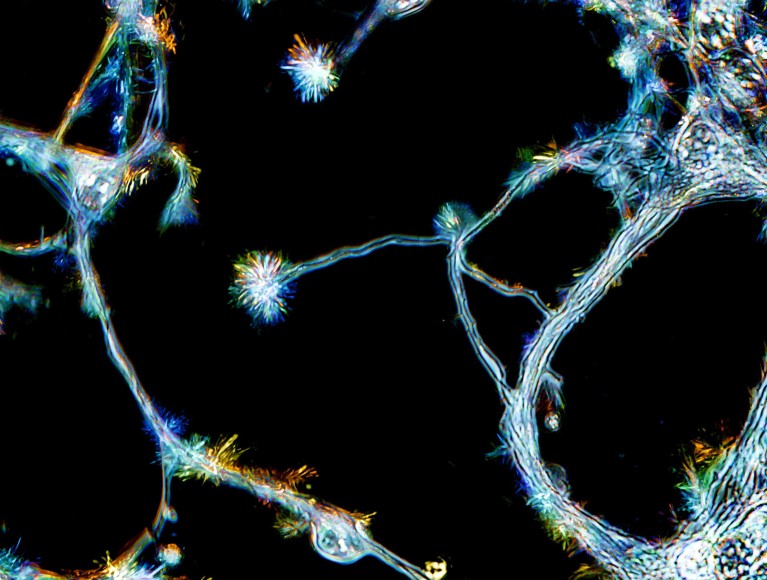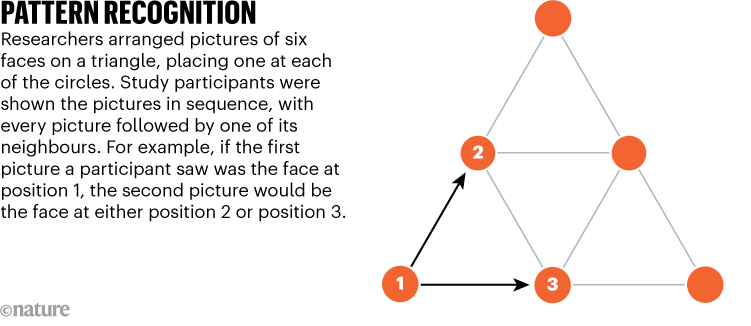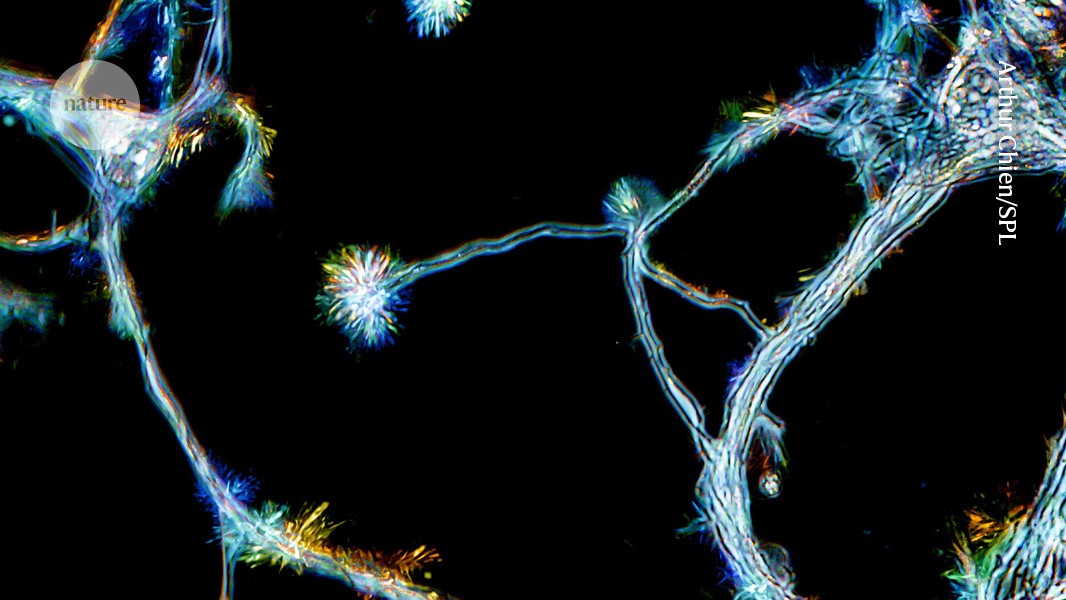
Neurons in the hippocampus (pictured) help to pick out patterns in the flood of information pouring through the brain.Credit: Arthur Chien/Science Photo Library
The human brain is constantly picking up patterns in everyday experiences — and can do so without conscious thought, finds a study1 of neuronal activity in people who had electrodes implanted in their brain tissue for medical reasons.
The study shows that neurons in key brain regions combine information on what occurs and when, allowing the brain to pick out the patterns in events as they unfold over time. That helps the brain to predict coming events, the authors say. The work was published today in Nature.
“The brain does a lot of things that we are not consciously aware of,” says Edvard Moser, a neuroscientist at the Norwegian University of Science and Technology in Trondheim. “This is no exception.”
Blizzard of data
To make sense of the world around us, the brain must process an onslaught of information on what happens, where it happens and when it happens. The study’s authors wanted to explore how the brain organizes this information over time — a crucial step in learning and memory.
The team studied 17 people who had epilepsy and had electrodes implanted in their brains in preparation for surgical treatment. These electrodes allowed the authors to directly capture the activity of individual neurons in multiple brain regions.
Among those regions were the hippocampus and entorhinal cortex, which are involved in memory and navigation. These areas contain time and place cells that act as the body’s internal clock and GPS system, encoding time and locations. “All the external world coming into our brain has to be filtered through that system,” says study co-author Itzhak Fried, a neurosurgeon and neuroscientist at the University of California, Los Angeles
Parade of faces
In preparation for the main experiment, the researchers showed each participant a variety of images of faces. For each participant, the scientists identified six of the faces that prompted an individual neuron in the participant’s brain to fire strongly. A participant might have a ‘man in sunglasses’ neuron, for example, along with a ‘woman in a hat’ neuron and four more that each favoured a particular face.
The team arranged each participant’s six images in a triangle that had one image at each corner and one on each side. Each image was connected to its nearest neighbours by lines running down the triangle’s sides and through its interior.
In an experimental trial, participants viewed a series of the face images. A simple rule dictated the sequence of images: each face was followed by one that was connected to it on the triangle (see ‘Pattern recognition’). For example, if the first face was the one on the triangle’s bottom left corner, the second face would be one of its two direct neighbours: the face in the middle of the triangle’s base or the face in the middle of the triangle’s left side. The experimenters did not reveal this rule to participants. What’s more, they distracted the participants by asking them questions about the images’ content during each trial.

Source: Ref. 1
During the experiment, neurons in each participant’s hippocampus and entorhinal cortex gradually began to respond not only to the face being presented but also to faces directly connected to it on the triangle. When asked whether they noticed any pattern in the order of the images, the participants said they didn’t. But their brain cells still learnt the pattern, showing that the brain can recognize patterns without conscious awareness. In the breaks between trials, the participants’ ‘face’ neurons replayed what they had learnt, cycling through the patterns on their own without being stimulated to do so.
“This is something that is not explicit, it is implicit. And the brain gets it, essentially, very quickly, and we can see those changes in the individual cells,” says Fried.
Future-facing neurons
The authors found that the neurons could also anticipate what images would appear next, suggesting that the brain can learn to predict future events on the basis of learnt patterns.
“The fact that’s happening without any external motivator is really interesting,” says Matt Jones, a neuroscientist at the University of Bristol, UK. “Many of the findings are remarkably consistent with predictions from rodent work, highlighting how hippocampal circuits have evolved to structure our cognitive maps,” he adds.
Understanding how the brain organizes information about sequences of events could have important clinical applications. For example, memory-enhancement therapies might focus on boosting specific neuronal patterns that represent important memories, says Fried. “It’s eventually a question of putting things together in time. This is really the crux of memory.”


